Anzeige
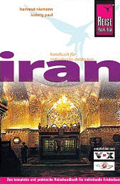
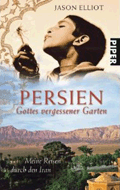
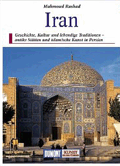
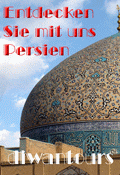
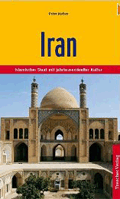
|
Cinema Museum - Ferdows Garden
Ferdows Garden, persich Baq e Ferdows is a historical complex in Tajrish, Shemiran, Northern Tehran, between Zafaraniyeh and Jafar Abad.It is a complex consisting of two palaces of which the former has decayed. Since 2002, the remained palace houses the Cinema Museum of Iran.
The Achaemenid Dynasty built over the entire empire, especially in Anatolia, pairi-daēzas, or "paradises," which consisted of extensive gardens and parks.
According to OED, as well as Dehkhoda Dictionary, Xenophon was the first to use the word paradeisos in the meaning of "enclosed park," "orchard," or "pleasure ground." Dehkhoda states that the Hebrew word pardēs entered into this language in the 5th century BC, following the arrival of Jews in Babylon. In the sections of the Old Testament that predate this arrival, the notions of "heaven" and "hell" are not specific; only later has pardes, originally meaning "garden" and "orchard," been endowed with the spiritual meaning that is signified by this word (as well as paradise) in later times, up to the present date.
Dehkhoda notes that pardes has been used synonymously as the Hebrew word gan in the meaning of "Garden of Eden." He continues that the word ferdows, used twice in Qur'an, has ist root in Judaism and Christianity, and that the Islamic scholars are generally united in considering that the word ferdows has been used in Qur'an in the meaning of "garden" and "orchard." There is, however, no consensus amongst these scholars as to the nature of this place.
The complex was originally designed by Hajj Mirza Āqasi, Prime Minister of Mohammad Shah Qajar, and was formerly known as Mohammadie. It was used as a summer residence by the Qajar family. Mohammad Shah Qajar died here in September 1848, and the complex became disused in subsequent years.
During the reign of Naser ed Din Shah (1848–1896), the ownership of the compound was transferred to Dust-Ali Khan (Nezam od Dowle – Moayyer ol Mamalek), who refurbished the palaces and named them Ferdows. Later, his son Dust-Mohammad Khan, the son-in-law of Naser od Din Shah, using the workmenship of architects from Esfahan and Yazd, built a new building at the southern edge of this structure, giving it the name Rask e Behest, literally "Envy of the Paradise."
Following this, the palace complex changed several hands, until it was bought by Mohammad-Vali Khan, Sepahsalar e Tonekaboni. Mohammad-Vali Khan was the leader of the Constitutionalist Revolutionary Forces from Iran's northern provinces of Gilan and Mazandaran. He was the first to arrive in Tehran and liberate the city from the royalist forces. He became Defence Minister in the first constitutionalist government that followed dethroning of Mohammad Ali Shah Qajar in 1909. He subsequently became Prime Minister, holding this post between October 1909 and July 1910.
Mohammad-Vali Khan added some further pools and fountains to the Ferdows Garden, and regenerated the aqueduct that, in earlier years, had fed the garden with fresh water. The impressive gate of the garden dates also from this time. The stately mansion was leased to various ministries over years. In 1937, the Ministry of Education housed a primary and a secondary school, Shapour schools, in this compound.
After the 1979 Revolution, until 2002, Ferdows Garden served as a training center for film-making. Since 2002, it houses the Cinema Museum of Iran.
The Iranian motion picture Bagh-e Ferdows, 5 o'clock In the Afternoon (2005), which was written, produced, and directed by Siamak Shayeghi, with Reza Kianian, Ladan Mostofi, and Azita Hajian playing in the principal roles, refers to the public park from where the main palace is in view.
GPS-Daten: N 35,80232° O 51,42205°
Hinweis: Diese Stadt/Sehenswürdigkeit liegt an den Rundreisen:
©: Texte (und Bilder) mit freundlicher Genehmigung von Wikipedia/Wikivoyage - GNU-Lizenz für freie Dokumentation, |
Anzeigen
|
|
|
© 2009 Traumpfade der Welt - Ihr kostenloser Urlaubs-Planer
kostenlose Reisebeschreibungen, Reiseinformationen, Reisetipps zu Städten, Sehenswürdigkeiten, Museen, Schlösser, Burgen, historischen und interessanten Gebäuden, Kirchen, Landschaften, Hotels und Restaurants
|
|










